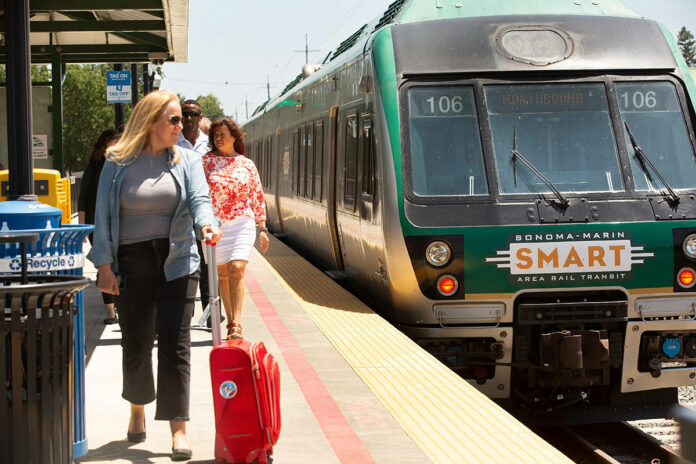
The Healdsburg City Council met on Monday night to discuss an issue that many thought had been decided long ago: where to locate a SMART passenger boarding station in town. The choices were whether to choose between two downtown locations just a few minutes’ walk from the Plaza, or stick with the former Northwestern Pacific Depot on Hudson Street—in a residential neighborhood that would be a bit farther walk to the downtown businesses.
Each location had its pros and cons, and each its supporters, but the decision remains several months off: A community meeting will be planned to gain wider input, and further council meetings are expected as well.
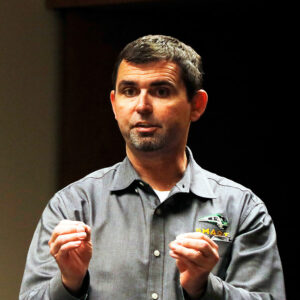
SMART—the Sonoma Marin Area Rail Transit district—has long included Healdsburg among its planned destinations, as well as a northernmost depot in Cloverdale. The transportation district struggled to gain ridership and grow its footprint over the past decade. With the arrival of Eddy Cumins as the new general manager in January 2022, it has been successful in fundraising through grants and government funds.
Latest among these was the June 28 award from the California Transportation Commission of $30 million toward completing the rail system and bicycle/pedestrian pathway extension to Windsor—an award that also enables SMART to begin engineering and construction of critical segments of the Healdsburg extension.
That was the context for the Aug. 21 council review of the location for a SMART rail station in Healdsburg. “The reason we’re having this conversation now is that SMART has had a very good year in terms of raising funds and winning grants to bring us closer to the extension of the SMART section to Healdsburg, so kudos to the SMART team,” said city manager Jeff Kay.
As Kay pointed out, while for a long time plans for a SMART depot in Healdsburg have focused on the location of the historic depot, it was when design plans for the Foley Community Pavilion at 3 North St. were undertaken, “some initial design work was done to determine if a SMART station could go at that location. And it was determined to be generally feasible,” he said.
Choosing a Station
The presentation from the SMART team, which included chief engineer Bill Gamlen as well as Cumins, among others, outlined the pros, cons and considerations of the proposed station sites. The former depot location on Hudson Street is fairly well known and easy to visualize, in the former train yard opposite what had been Healdsburg Lumber until just a few months ago.
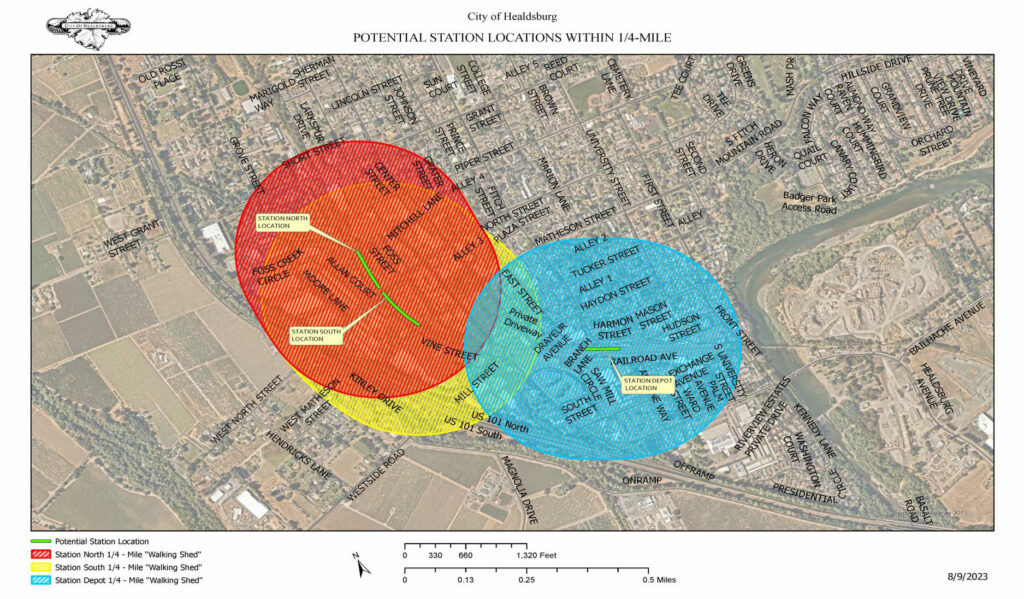
Less easy to picture were the two downtown locations. One of these was called “North of North Street,” and would be across the street from the City Hall chambers where the council was then meeting. The other location would be south of that, along the West Plaza Parking lot, a location called “Between North & Matheson Streets.”
The full cost of the extension project is expected to be $160 million, though only $78 million is currently available. According to Cumins, this is earmarked for a five-mile rail extension from Windsor to Healdsburg, the replacement of the old Russian River Rail bridge upstream from the Healdsburg Avenue bridge, building a new bicycle and pedestrian pathway parallel to the rail line over the Russian River, and building a new passenger station.
However, while SMART will build and pay for that station, its location is up to the host city, Healdsburg. “We are very excited that this work has started, but one of the first things that we need to establish is the location of the Healdsburg station,” said Cumins.
The presentation outlined the three possible locations for a Healdsburg station. Any of these locations needs to be able to accommodate a passenger boarding platform, bicycle parking, dedicated parking for between 30-50 cars for SMART passengers and two parallel rail lines, for north and southbound trains. Projected ridership is roughly 105,000 annually, with perhaps 38 trains daily on weekdays and 12 on weekend days.
Through the discussion of pros and cons, it became apparent that the downtown locations required considerable construction and rerouting of traffic, Foss Creek Trail and possibly the creek itself, as well as a potential overall loss of public parking. The only noted disadvantage of the depot location was its “real and perceived distance to downtown core”—a 2,000-foot walk to the Plaza, a little over a third of a mile.
Public Comment
It has long been anticipated that the depot location would be the site of a SMART station. In fact, among the citizen speakers at the meeting was Clifford Grutze, a member of the 1997 city study committee on a station location.
He waved a thick paper sheaf of the report, questioning whether it was digitally available. “If you people at SMART would like to look at what somebody else did to invent the wheel, 27 years ago, I’d be happy to lend it to you,” said Grutze.
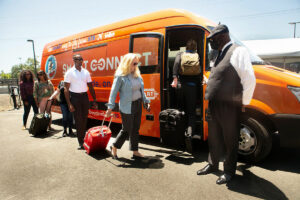
He also pointed out that the depot location allowed for long-term parking of a three-car train without traffic disturbance, which a downtown location could not, and a lengthy straight track for federal rail safety standards, again not available at the proposed downtown locations.
Mayor Ariel Kelley pointed out that it was digitized, could be found on the Healdsburg 2040 website and it had been shared with SMART.
Matias Lopez said the larger point was to create an area transportation hub, which would include not only SMART trains but Amtrak bus stops, Sonoma County Transit buses, and a Mendocino transit bus that goes to Santa Rosa and currently bypasses Healdsburg altogether. Those routes might find a downtown transit hub more convenient, he said.
Valerie White repeated a series of questions she has asked before: “Where did the idea for having a downtown station come from? When did this idea surface? And whose idea was it?”
Looming large over much of the conversation was the roundabout, the five-way intersection of Healdsburg Avenue, Mill Street and Westside Road. A depot location would halt train traffic before it reached the roundabout, at least until the rail system was extended to Cloverdale, which is almost certainly years away.
But the other two station proposals would assure that every train that came to Healdsburg ran though that intersection, albeit briefly. And the impact of 38 trains a day, 14 on weekends, passing through one of Healdsburg’s busiest intersections was a topic that had yet to be fully studied.
The 90-minute presentation and discussion reached no conclusion, though it’s possible some minds were made up before it began. “It is definitely the water cooler conversation in Healdsburg right now,” said Kelley. Kay and Kelley agreed that a well-noticed community meeting would be the next step, hopefully to happen in the next month or shortly thereafter.


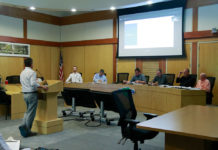
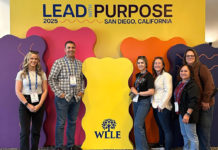
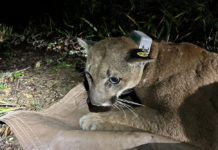




What a colossal waste of money. How about repaving the pothole-strewn roads, which rival third-world countries?
The existing depot has parking, room for buses and multi tracks for train car storage.
Also the roundabout will not be blocked till Cloverdale is in the mix. Go to Europe and see where the majority of the stations are located. Folks will walk the less than 1/2 mile with ease. Also for those that can’t walk a city shuttle can be used.
LOL! People are putting the cart before the horse. It will take years to rebuild the RR bridge over the Russian River. Look how long it took to rebuild the antique 1921 truss bridge. I see all the RR ties in readiness across the tracks from the old RR station. LOL! They will need that creosote to last long enough to be used. Healdsburg and the “SMART” train crack me up.